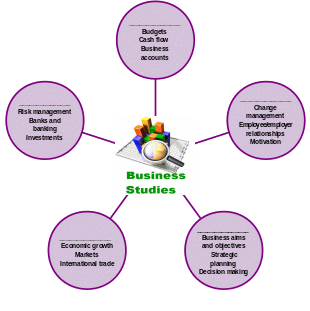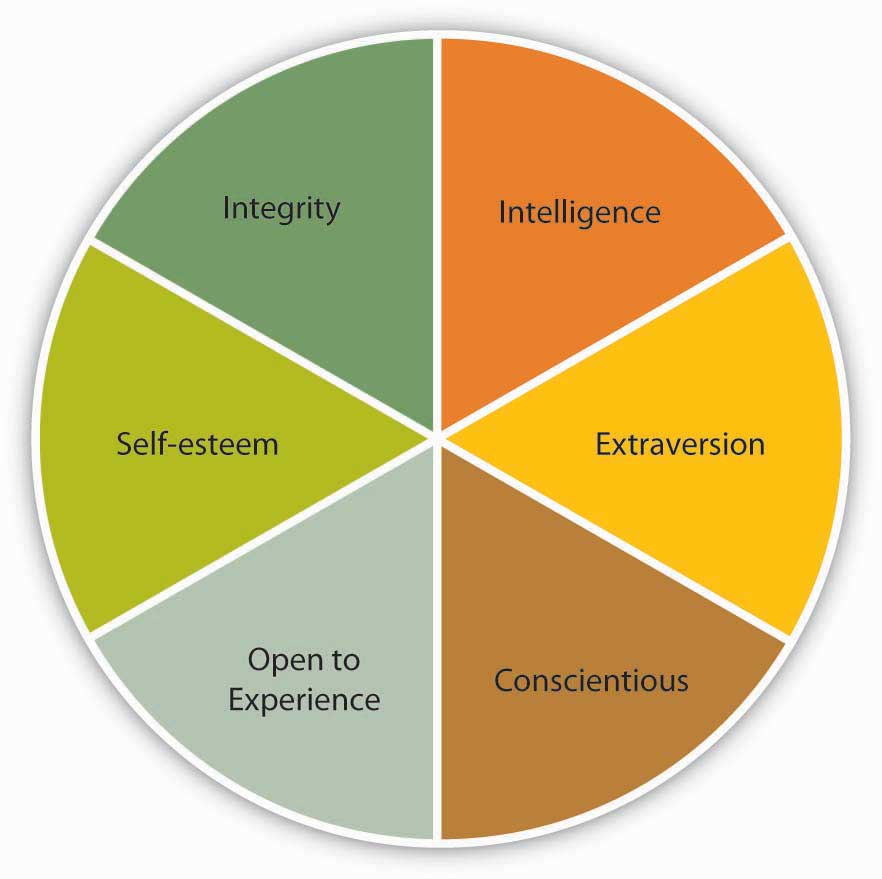
- •Start-up
- •1. These are the names of several academic subjects in business education:
- •2. Relate the following topics to the appropriate subjects from Start-up exercise 1.
- •L eading People and Organisations
- •Vocabulary
- •Qualifiers
- •1. Read the notes from a lecture about good employees. Circle the symbols and abbreviations that are used. Then work with a partner. Take turns making complete statements based on the notes.
- •2. When taking notes, you can use any abbreviations you want as long as your can understand your notes later. Make up your own abbreviations for the following words.
- •1. You will hear a lecture about business management. What are two problems a new manager might have with the employees?
- •Becoming a Leader
- •What do you think of Dale Carnegie’s advice? Would you like to add something?
Unit 4 |
Business matters |
Start-up
1. These are the names of several academic subjects in business education:
Business Administration Human Resource Management
Finance Economics Accounting
Match these subjects with their descriptions below.
__________ is the tracking, auditing and maintaining of financial records.
__________ describes the management, creation and study of money, banking, credit, investments, assets and liabilities.
__________ is responsible for the attraction, selection, training, assessment, and rewarding of employees.
__________ is the process of managing every aspect of a business in order for it to maintain its growth or stability.
__________ is concerned with the production, distribution, and consumption of goods and services and the analysis of the commercial activities of a society.
2. Relate the following topics to the appropriate subjects from Start-up exercise 1.

3. Match the following types of training with the things a person needs to learn:
a) financial management f) team development
b) delegation g) leadership
c) intercultural communication skills h) time management
d) communication skills i) assertiveness training
e) project management j) negotiating skills
You need to learn how to: You need a course in:
1) work with other people f__
2) motivate and direct other people _____
3) talk to and listen to people better _____
4) work with people from different _____
countries and backgrounds
5) bargain with business partners _____
6) increase margins and control costs _____
7) set budgets, organize schedules and _____
meet deadlines
8) prioritize your work, and not put off
important tasks
9) be more ready to stand up to other people _____
10) give work to your subordinates _____
![]() Reading
Reading
1. Which personal qualities below will you expect to find in a leader?
decisive charismatic motivating ruthless open passionate modest balanced dominant
energetic conscientious irritable creative self-confident moody brave trusting
2. Read the title of the text and decide which area of business education it belongs to.
L eading People and Organisations
Leadership and management are inextricably linked. Highly successful organisations need great leaders and managers at all levels, from team leader to the CEO. Equally, being an effective leader in the 21st Century also means having the skills and aptitude to be an effective manager. But, while leadership and management are closely connected - both are about achieving results through others - there are important differences:
Managers get things done. They set the operational direction, and facilitate and organise resources in order to optimise the performance of people, allowing them to carry out tasks and achieve goals efficiently and effectively. They create the space that allows people to collaborate together; they provide the clarity and accountability that enable teams to meet their objectives.
Leaders look at the horizon, set long range goals, and provide strategic direction and context, outlining their vision and objectives. Great leaders help build an organization’s human capital, inspiring people to follow them and motivating individuals to take concerted action.
Thus, leadership may be defined as the act of influencing others to work toward a goal. Leaders exist at all levels of an organization. The important questions that have attracted scholarly attention in the past several decades are: what distinguishes people who are perceived as leaders from others, and what makes leaders effective.
The earliest approach to the study of leadership sought to identify a set of traits that distinguished leaders from nonleaders. General mental ability, which is often called IQ in everyday language, has been related to a person’s emerging as a leader within a group. In addition to having high IQ, effective leaders tend to have high level of emotional intelligence (EQ). People with high EQ demonstrate a high level of self-awareness, motivation, empathy, and social skills.
Extraversion is strongly related to leadership. Extraverts are sociable, assertive, and energetic people. They enjoy interacting with others in their environment and demonstrate self-confidence. Because they are both dominant and sociable in their environment, they often emerge as leaders in a wide variety of situations. Very few introverts can be found in leadership positions.
Self-esteem is an important aspect of one’s personality. The degree to which people are at peace with themselves and have an overall positive assessment of their self-worth and capabilities seems to be relevant to whether they will be viewed as a leader. Leaders with high self-esteem support their subordinates more, and when punishment needs to be administered, they punish more effectively.
There are also some traits that are negatively related to emerging as a leader and being successful as a leader. For example, agreeable people who are modest, good natured, and avoid conflict are less likely to be perceived as leaders. However, the main limitation of the trait approach was that it ignored the situation in which leadership occurred. Therefore, it is more useful to specify the conditions under which different traits are needed.
2. Answer these questions.
a) What is the relation between leadership and management? Do these words mean the same?
b) How do you define leadership?
c) Can the findings of trait approaches be used to train potential leaders? Which traits seem easier to teach? Which are more stable?
d) What traits can you think of that would not be relevant to leadership?
e) Who would you identify as a great leader?
3. Find the words in the text that mean the same as:
a) inseparably (paragraph 1) ___________________________________________
b) capability (paragraph 1) _____________________________________________
c) goals (paragraph 2) ________________________________________________
d) characterising, planning (paragraph 3) __________________________________
e) coordinated (paragraph 3) ___________________________________________
f) to tell the difference (paragraphs 4,5) ___________________________________
g) to appear, to become known (paragraphs 5,6) ____________________________
h) appropriate (paragraph 7) ____________________________________________
i) to indicate, to determine (paragraph 8) __________________________________

4. This figure presents some personality traits associated with leadership.
Discuss with a partner what influence each of them may have on person’s leadership ability.
